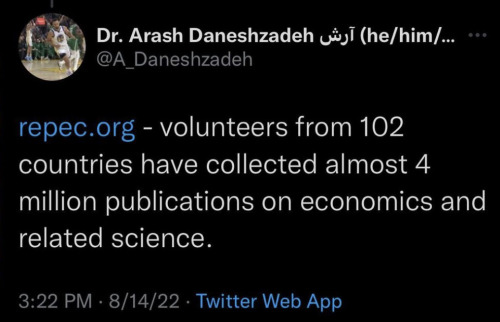How I Join Skeins
How I join skeins
More Posts from Thejunkdrawers and Others
Concept: a post-apoc survival game where the premise is that the previous batch of heroes stopped one of those allegorical JRPG-style apocalypses, but the physical consequences didn’t magically undo themselves afterwards, so now everyone has to to deal with symbolic bullshit like your agricultural land being replaced with forests of stone hands, or that giant eyeball where your capital city used to be. The tone could be horror, but it’s not; rather, the emphasis is on how incredibly inconvenient it is for everybody that pieces of the world have been transformed into half-baked metaphors for hating your dad.
So, tattoo shop AUs are really popping off lately and personally I love it. What’s more romantic than bleeding for art? Nothing!
But as someone married to a tattoo artist, I have been experiencing some mild She Wouldn’t Say That regarding tattoo culture. So here’s a few quick tips that may help inform your AU. With a grain of salt for my mostly-second-hand knowledge:
NO ONE REPUTABLE SHOP WILL TATTOO A DRUNK PERSON. EVER. or even a person they suspect of any kind of inebriation. This is not just for Regret reasons, but also because alcohol is a blood thinner. If someone is on an acute dose of blood thinners, you generally do not want to stab them dozens of times per second.
Maybe this is regional, but in my experience most tattoo places don’t call themselves parlors anymore. It has a kind of seedy vibe. I see shop or studio a lot but rarely parlor.
Most tattoo artists are hot, yes, but none are as hot at my wife
Tattooing janks up your hands. Sometimes in a RSI way but definitely in a changing-gloves-every-five-minutes-fucks-up-your-skin way.
Artists themselves are rarely if ever employees of the shop. They will be independent contractors who pay the shop either a cut of their sales or rent on their station like a hair dresser. They are also (usually) responsible for taking care of their own supplies, tools, etc. except for the stencil printer. What kind of dweeb would have their own stencil printer?
There is always a line for the stencil printer. Always.
Artists generally spend orders of magnitude more time working on art, replying to emails, doing consults, etc compared to time with their needles in skin.
A typical schedule for an artist might be: wake up at noon and guzzle half her body weight in coffee, one appointment from 1-4, and another from 6-9. Home to eat one (1) real meal at 10 pm. Drawing until 5 am. This is good for her actually and good for our marriage and she’s so healthy all the time.
An ideal shop receptionist needs to be friendly, knowledgeable, and encouraging. They also need to be willing to get out the baseball bat that is kept behind the counter.
If a shop has to choose between “good people skills” and “will promptly rebuff Nazis and the obviously inebriated” the later is often a more important consideration.
At any given moment in any given shop there’s going to be at least one apprentice or someone bumming around hoping to be taken on as an apprentice. They spawn on tic and this feature cannot be disabled.
Again I can not overstate how hot my wife is
ayo i found 2 pages with head angles of humans and animals, could be useful to anyone reading this

hoomans

animals
it’s hilarious to me when people call historical fashions that men hated oppressive
like in BuzzFeed’s Women Wear Hoop Skirts For A Day While Being Exaggeratedly Bad At Doing Everything In Them video, one woman comments that she’s being “oppressed by the patriarchy.” if you’ve read anything Victorian man ever said about hoop skirts, you know that’s pretty much the exact opposite of the truth
thing is, hoop skirts evolved as liberating garment for women. before them, to achieve roughly conical skirt fullness, they had to wear many layers of petticoats (some stiffened with horsehair braid or other kinds of cord). the cage crinoline made their outfits instantly lighter and easier to move in
it also enabled skirts to get waaaaay bigger. and, as you see in the late 1860s, 1870s, and mid-late 1880s, to take on even less natural shapes. we jokingly call bustles fake butts, but trust me- nobody saw them that way. it was just skirts doing weird, exciting Skirt Things that women had tons of fun with
men, obviously, loathed the whole affair

(1864)

(1850s. gods, if only crinolines were huge enough to keep men from getting too close)

(no date given, but also, this is 100% impossible)

(also undated, but the ruffles make me think 1850s)
it was also something that women of all social classes- maids and society ladies, enslaved women and free women of color -all wore at one point or another. interesting bit of unexpected equalization there
and when bustles came in, guess what? men hated those, too

(1880s)

(probably also 1880s? the ladies are being compared to beetles and snails. in case that was unclear)

(1870s, I think? the bustle itself looks early 1870s but the tight fit of the actual gown looks later)
hoops and bustles weren’t tools of the patriarchy. they were items 1 and 2 on the 19th century’s “Fashion Trends Women Love That Men Hate” lists, with bonus built-in personal space enforcement








The ribbon eel or Bernis eel, is a species of moray eel. The presumed juveniles and subadults are jet black with a yellow dorsal fin, in adult males the black is replaced by blue, and adult females are entirely yellow or yellow with some blue to the posterior.
How to show emotions
Part IV
How to show bitterness
tightness around their eyes
pinched mouth
sour expression on their face
crossed arms
snorting angrily
turning their eyes upward
shaking their head
How to show hysteria
fast breathing
chest heaving
trembling of their hands
weak knees, giving in
tears flowing down their face uncontrollably
laughing while crying
not being able to stand still
How to show awe
tension leaving their body
shoulders dropping
standing still
opening mouth
slack jaw
not being able to speak correctly
slowed down breathing
wide eyes open
softening their gaze
staring unabashingly
How to show shame
vacant stare
looking down
turning their head away
cannot look at another person
putting their head into their hands
shaking their head
How to show being flustered
blushing
looking down
nervous smile
sharp intake of breath
quickening of breath
blinking rapidly
breaking eye contact
trying to busy their hands
playing with their hair
fidgeting with their fingers
opening mouth without speaking
Part I + Part II + Part III + Part V
If you like my blog and want to support me, you can buy me a coffee or become a member! And check out my Instagram! 🥰
Social Insects in Science Fiction
Hello, my name is Poetry, and I love social insects. Whether they’re ants, bees, termites, wasps, aphids, thrips, or ambrosia beetles, I find them fascinating to learn about. But if the sci-fi books I read as a kid had had their way, I should have run screaming from every ant colony I saw.
From the buggers in Ender’s Game to the Borg in Star Trek to the Vord in Codex Alera to ants and termites themselves from a morph’s-eye view in Animorphs, social insects, and the aliens or artificial intelligences that closely resemble them, are portrayed as “hive minds” with an emotional tone of existential terror. And I’m here to tell you that these portrayals are totally unfair.
What they get right
Here are some features that most portrayals of social insects and their analogues in sci-fi get right. Yes, social insect colonies have queens that are primarily responsible for reproduction. Yes, social insects have very different sensory modalities from ours. We primarily use sight and sound to communicate and navigate the world, while social insects use taste and smell and vibration. Yes, social insects have specialized division of labor to particular tasks, and yes, they are willing to sacrifice themselves in droves to protect the colony. And sometimes, they will enslave social insects from other colonies or even species to serve their own ends (x).
Thus ends what sci-fi portrayals get right.
What they get wrong: Queens
Almost universally in sci-fi, when you kill the queen, the hive disintegrates into chaos. You’ve cut off the head! The central intelligence of the hive is gone! They’re just mindless borg-units with no idea what to do!
Indeed, in some social insects, such as leafcutter ants, if you kill the queen, the whole colony will die – but probably not for the reasons you think. However, it’s more common for social insects to be able to carry on just fine regardless. In most ants and bees, there are “backup” queens that are reared up by the workers in case the current queen should die. And in many social insects, a worker can step up and become a queen in her place. (Hilariously, a worker ant that steps up to reproduce in place of a queen ant is called a gamergate.)
But here is the most important problem with the sci-fi trope of killing the queen to kill the hive. The queen is not the brain of the hive. She is the ovary.
If you think of a social insect colony as a superorganism, which it’s useful to do in many cases, different groups of insects within the colony act like organs. One caste protects the colony from invaders, which is like an immune system. One caste scouts for new places to forage, which is like a sensory system. Generally, science fiction has a good grip on this idea. Where sci-fi authors fail is that they think the queen is the brain of this superorganism. She is not. She is the reproductive system. The queen does not control what happens in the hive any more than your reproductive system controls what happens in your body. (Which is to say, she has some influence, but she is not the brains of the operation.)
The reason why leafcutter ant colonies die when the queen dies is because the colony has been castrated, not beheaded. Most animals die when they are no longer able to reproduce, even if their brains are still perfectly functional. For castrated colonies with no backup queen or gamergate and no hope of getting one, there is no point in carrying on. Their evolutionary line has ended.
What they get wrong: Swarm intelligence
Here is how social insect hive minds work in science fiction: the queen does the thinking, and the rest of the hive goes along with whatever she thinks.
Now, I’ve already told you that the queen is not the brain of the hive. So where is the brain? Well, that is exactly the point of swarm intelligence. The brain does not reside in one particular animal. It’s an emergent property of many animals working together. A colony is not like your body, where your brain sends an impulse to your mouth telling it to move, and it moves. It’s more like when two big groups of people are walking toward each other, and they spontaneously organize themselves into lanes so no one has a collision (x). There’s no leader telling them to do that, but they do it anyway.
Much of the efficiency of social insect colonies comes from very simple behavioral rules (x). Hymenopterans, the group of insects that includes ants, bees, and wasps, have a behavioral rule: work on a task until it is completed, and when it is done, switch to a different task. If you force solitary bees (yes, most bee species are solitary) to live together, they will automatically arrange themselves into castes, because when one bee sees another bee doing a task like building the nest, its behavioral rule tells it that the task is completed and it needs to switch to a different task, like looking for food.
Individually, a social insect isn’t all that smart, whether it’s a queen, worker, soldier, or drone. But collectively, social insects can do incredibly smart things, like find the most efficient route from the colony to some food (x), or choose the perfect spot to build their hive (x).
What they get wrong: Individuality
The existential terror of the hive mind in science fiction comes from the loss of the self. The idea is that in a social insect colony, there is no individual, but one whole, united to one purpose. No dissent, disagreement, or conflicting interests occur, just total lockstep. I totally get why that’s scary.
The thing is, it’s just not true of real social insects. There is conflict within colonies all the time, up to and including civil war.
A common source of conflict within colonies is worker reproduction. Yes, in most social insects, workers can in fact reproduce, though usually they can only produce males. So why don’t they? Because it’s not in the interest of their fellow workers. Workers are more closely related to their siblings and half-siblings produced by the queen than they are to their nephews, so they pass on more of their genes if they spend resources on raising the queen’s eggs. So, if a worker catches its fellow laying an egg, it will eat the egg. Not exactly “all for one and one for all,” is it?
Worker insects may also fight in wars of succession. If there is more than one queen in a species where queens do not tolerate each other (yes, there are species where multiple queens get along together just fine), such as monogynous fire ants, the workers will ally themselves with one queen or another and engage in very deadly civil war.
Finally, in some species, the queen needs to bully the workers into doing their jobs, and the dominant workers need to bully subordinate workers into doing their jobs (x). Yes, sometimes workers try to laze around and mooch.
Surprisingly human
Here’s what I find weird about depictions of social insects in science fiction. They are portrayed as utterly alien, Other, and horrifying. Yet humans and social insects are very, very similar. The famous sociobiologists E.O. Wilson and Bernard Crespi have both described humans as chimpanzees that took on the lifestyle of ants.
I think what fascinates people, including me, about ants, bees, and their ilk is that you watch, say, a hundred ants working together to tear up a leaf into tiny bits and carry it back to their colony, or a hundred bees all appearing out of seemingly nowhere to sacrifice themselves en masse to stop a bear from eating their hive, and it looks like magic. It really does look like some kind of overmind is controlling their collective actions.
But imagine you’re an alien who comes to Earth, and you know nothing about humans or the way we communicate. Wouldn’t we look exactly the same to them as ants and bees look to us? Wouldn’t they look at us sacrificing our lives by the thousands in wars, or working together to build cities from nothing, and think, Wow, how do they coordinate themselves in such huge numbers, why do they give up their lives to defend their borderlines, I guess there must be some kind of mega-brain they all share that tells them what to do, and they just march in lockstep and do it.
If there’s anything I’ve learned from the study of both social insects and humans, it’s that any system that looks monolithic and simple from a distance is in fact fractured, messy, and complicated when you look at it up close.
Social insects aren’t scary mindless robot-aliens. They’re a lot like you and me. As much as I was terrified as a kid by the Animorphs book where an ant morphs into Cassie and screams in pure existential horror at its sudden individuality, I actually think an ant would adjust very easily to being a human, and that a human would adjust very easily to being an ant – much more easily, in fact, than humans adjusted to morphing, say, sharks, in the very same book series.


refseek.com

www.worldcat.org/

link.springer.com

http://bioline.org.br/

repec.org

science.gov

pdfdrive.com
-
 moonlight-shipper-haven reblogged this · 3 weeks ago
moonlight-shipper-haven reblogged this · 3 weeks ago -
 snooperboopers reblogged this · 3 weeks ago
snooperboopers reblogged this · 3 weeks ago -
 2jaunty2fool reblogged this · 3 weeks ago
2jaunty2fool reblogged this · 3 weeks ago -
 kittywarrior2287 reblogged this · 3 weeks ago
kittywarrior2287 reblogged this · 3 weeks ago -
 kittywarrior2287 liked this · 3 weeks ago
kittywarrior2287 liked this · 3 weeks ago -
 impcr3atur3 liked this · 3 weeks ago
impcr3atur3 liked this · 3 weeks ago -
 sierrawuff reblogged this · 3 weeks ago
sierrawuff reblogged this · 3 weeks ago -
 sierrawuff liked this · 3 weeks ago
sierrawuff liked this · 3 weeks ago -
 horses-dni reblogged this · 3 weeks ago
horses-dni reblogged this · 3 weeks ago -
 femere-voidwater reblogged this · 3 weeks ago
femere-voidwater reblogged this · 3 weeks ago -
 critternest reblogged this · 3 weeks ago
critternest reblogged this · 3 weeks ago -
 critternest liked this · 3 weeks ago
critternest liked this · 3 weeks ago -
 bix-beans liked this · 3 weeks ago
bix-beans liked this · 3 weeks ago -
 artisticicada reblogged this · 3 weeks ago
artisticicada reblogged this · 3 weeks ago -
 voidgoatazzy reblogged this · 3 weeks ago
voidgoatazzy reblogged this · 3 weeks ago -
 justsomedagnabkid liked this · 3 weeks ago
justsomedagnabkid liked this · 3 weeks ago -
 musicalghost413 reblogged this · 3 weeks ago
musicalghost413 reblogged this · 3 weeks ago -
 musicalghost413 liked this · 3 weeks ago
musicalghost413 liked this · 3 weeks ago -
 waflafel reblogged this · 3 weeks ago
waflafel reblogged this · 3 weeks ago -
 goblinism liked this · 3 weeks ago
goblinism liked this · 3 weeks ago -
 mazief5 liked this · 3 weeks ago
mazief5 liked this · 3 weeks ago -
 red-space-ace liked this · 3 weeks ago
red-space-ace liked this · 3 weeks ago -
 dreamtofyou liked this · 3 weeks ago
dreamtofyou liked this · 3 weeks ago -
 urbanbanking liked this · 3 weeks ago
urbanbanking liked this · 3 weeks ago -
 deathcomesforthearchbitch liked this · 3 weeks ago
deathcomesforthearchbitch liked this · 3 weeks ago -
 headcannons-and-random-things liked this · 3 weeks ago
headcannons-and-random-things liked this · 3 weeks ago -
 xamazingdjx liked this · 3 weeks ago
xamazingdjx liked this · 3 weeks ago -
 geniusgingerprincess reblogged this · 3 weeks ago
geniusgingerprincess reblogged this · 3 weeks ago -
 geniusgingerprincess liked this · 3 weeks ago
geniusgingerprincess liked this · 3 weeks ago -
 thelivingjen reblogged this · 3 weeks ago
thelivingjen reblogged this · 3 weeks ago -
 thelivingjen liked this · 3 weeks ago
thelivingjen liked this · 3 weeks ago -
 rawdogimus-prime reblogged this · 3 weeks ago
rawdogimus-prime reblogged this · 3 weeks ago -
 rawdogimus-prime liked this · 3 weeks ago
rawdogimus-prime liked this · 3 weeks ago -
 max-vandenburg-is-life liked this · 3 weeks ago
max-vandenburg-is-life liked this · 3 weeks ago -
 lesbiansnoopy liked this · 3 weeks ago
lesbiansnoopy liked this · 3 weeks ago -
 a4tog6 reblogged this · 3 weeks ago
a4tog6 reblogged this · 3 weeks ago -
 a4tog6 liked this · 3 weeks ago
a4tog6 liked this · 3 weeks ago -
 muppetyaoi reblogged this · 3 weeks ago
muppetyaoi reblogged this · 3 weeks ago -
 salix-triandra reblogged this · 3 weeks ago
salix-triandra reblogged this · 3 weeks ago -
 salix-triandra liked this · 3 weeks ago
salix-triandra liked this · 3 weeks ago -
 fudeh reblogged this · 3 weeks ago
fudeh reblogged this · 3 weeks ago -
 fantasticautomatonshapeshifter liked this · 3 weeks ago
fantasticautomatonshapeshifter liked this · 3 weeks ago -
 sweepsthroughtheleaves reblogged this · 3 weeks ago
sweepsthroughtheleaves reblogged this · 3 weeks ago -
 ressourcen reblogged this · 3 weeks ago
ressourcen reblogged this · 3 weeks ago -
 planetjpg reblogged this · 3 weeks ago
planetjpg reblogged this · 3 weeks ago -
 summongoofball reblogged this · 3 weeks ago
summongoofball reblogged this · 3 weeks ago -
 hardhuilen liked this · 3 weeks ago
hardhuilen liked this · 3 weeks ago -
 planetjpg reblogged this · 3 weeks ago
planetjpg reblogged this · 3 weeks ago

A side blog where I'll *try* to keep things organised.yeahthatsnotgoingtolastlong
241 posts












